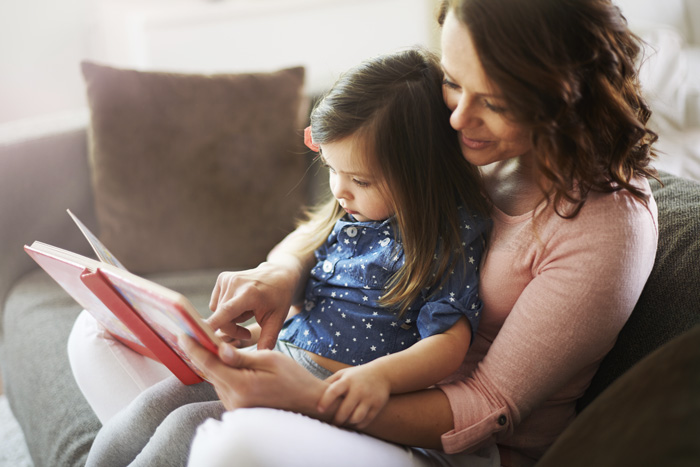Helping children understand addiction is challenging.
Every child has a different lens on the world. Most of the time, that world is as big as what happens at home and the people there. The older a child becomes, the more that world expands, but there’s still a strong tie to the perceptions and understanding they first learned at home.
If you’re trying to explain to a child the nuances of serious topics such as substance abuse, mental health conditions, addiction, and the tenuous stages of recovery, there are various books to help guide your course and conversation. Here are some suggestions.
Books for Children About Addiction by Age
Ages 2-5
The Bad Dragon by Michael Gordon
Young children pick up on erratic emotions and tones of voice long before they understand what’s going on. The dragon in this book moves through emotions and actions such as anger and rudeness. Gordon has other books in this series that deal with less-than-positive emotions.
Critters Cry Too: Explaining Addiction to Children by Anthony Curcio
Critters enjoyed doing all sorts of things until they encountered Whateveritwas—and then, all they could think about was getting more Whateveritwas. This book helps young ones begin to understand the concepts of erratic behavior, loving someone with chemical dependency, feeling alone, and talking about emotions.
Stoney the Pony’s Most Inspiring Year: Teaching Children About Addiction through Metaphor by Linda Myers
Myers is a therapist who works with chemically-dependent youth and their families. In this story, Stoney “just can’t stop eating peppermint candies.” As he becomes fixated on them, his behavior changes, and he wants nothing to do with his friends or family—he’ll do whatever he can to get peppermint candies. When they realize how sick Stoney is, his family tries to find him help. The book also features a “Points for Parents” to help initiate conversations and respond to questions.
Ages 6-11
I Can Be Me: A Helping Book for Children of Alcoholic Parents by Dianne S. O’Conner, Ed.D
When they don’t understand what’s happening, children can act out, withdraw from family and friends, and express other difficult behaviors. Psychologist O’Conner uses various creative techniques in this book to help children get in touch with their emotions and learn healthier coping skills. More importantly, she teaches them that they’re not to blame for the actions of their parents or other adults with substance abuse problems. The book features the perspectives of many children of addicted caregivers.
A Terrible Thing Happened by Margaret M. Holmes
Sherman the Raccoon sees something horrible happen, and thinking about it makes him angry, anxious, and sad. When he finally talks to a counselor about his feelings, he eventually learns how to deal with his emotions and get better. Since the book doesn’t identify a specific “terrible thing,” this book allows adults and children to discuss just about any negative topic and prepares them for family therapy with loved ones.
An Elephant in the Living Room by Jill M. Hastings and Marion H. Typpo
First released in 1994, this book’s staying power is in its direct message and interactive approach regarding alcohol addiction and, to a lesser degree, drug addiction. Caregivers can use the illustrations, fill-in-the-blank prompts, and other methods to help older children work through what they’re hearing, observing, and experiencing.
Daddy’s Disease (Helping Children Understand) by Carolyn Hannan Bell
In this book, Tommy doesn’t understand some of the things his father does and says. He also thinks it’s his fault that his father doesn’t want to be home or go to soccer games. His mother helps explain what Daddy’s disease is and how it impacts him and the whole family. Bell uses her insight as therapist specializing in substance abuse to help readers navigate all the emotions of guilt or shame they sometimes feel. There’s also Mommy’s Disease in this series.
My Dad Loves Me, My Dad Has a Disease: A Child’s View: Living With Addiction by Claudia Black, PhD
Told from a child’s perspective, this book uses a variety of exercises such as Q&A and drawing to help children process what’s happening in their family. If they feel they can’t talk to anyone else, this helps them identify and discuss various emotions, such as frustration, fear, sadness, and loss. Black specializes in working with children and young adults regarding the fallout of addiction and codependency.
When a Family Is in Trouble: Children Can Cope With Grief from Drug and Alcohol Addiction by Marge Heegaard
This is another illustrated workbook that allows children to draw and fill in responses to key prompts about feelings, such as “I feel sad when….” It also presents various scenarios that allow for a conversation about what children observe in someone’s actions, safety issues, how to talk about feelings and when, and other significant issues.
Ages 12-16
Why Don’t They Just Quit? What Friends and Families Need to Know About Addiction and Recovery by Joe Herzanek
As a teenager and young adult, Herzanek battled addiction. More than 30 years later, he provides a straight-up, off-the-cuff perspective in this book that teens often appreciate. Now a chaplain and the founder of Changing Lives Foundation, Herzanek uses this book to answer many common questions about addiction.
Addict in the House: A No-Nonsense Family Guide Through Addiction and Recovery by Robin Barnett, Ed.D, LCSW
This book helps teenagers understand addiction, how not to become codependent on their parents or siblings with substance abuse problems, how to navigate the various feelings associated with the problem, and how to establish firm boundaries. Barnett is a well-known behavioral health and addiction advisor.
Willingway: For Your Family’s Health
Founded by the Mooney family more than 50 years ago in Statesboro, GA, Willingway’s caring staff of medical experts wants to help you form lasting relationships and achieve well-being and sustained recovery. It’s our mission to help you restore a balanced healing to each member of your family. Let us help you find a solution.

